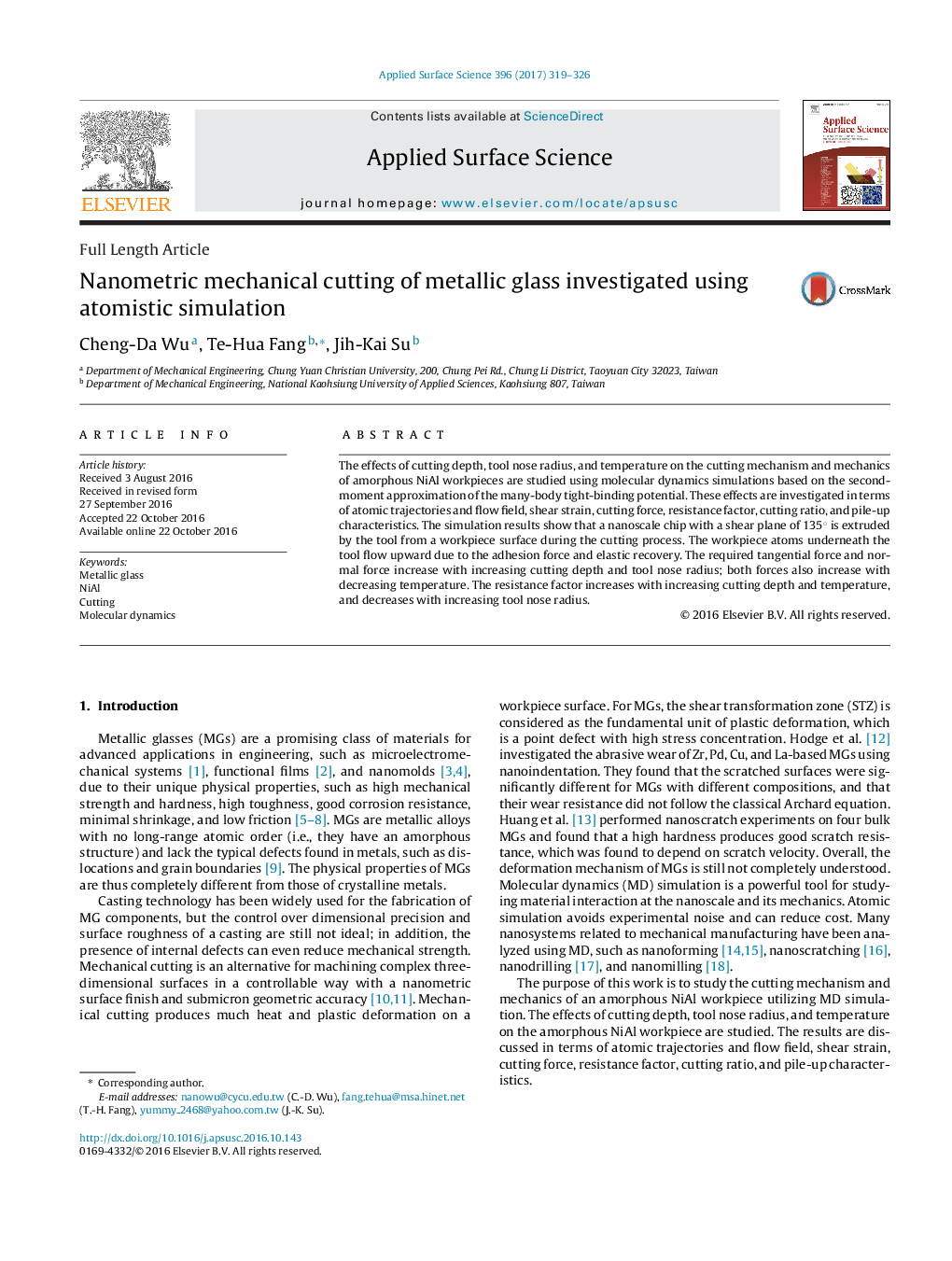| Article ID | Journal | Published Year | Pages | File Type |
|---|---|---|---|---|
| 5352710 | Applied Surface Science | 2017 | 8 Pages |
Abstract
The effects of cutting depth, tool nose radius, and temperature on the cutting mechanism and mechanics of amorphous NiAl workpieces are studied using molecular dynamics simulations based on the second-moment approximation of the many-body tight-binding potential. These effects are investigated in terms of atomic trajectories and flow field, shear strain, cutting force, resistance factor, cutting ratio, and pile-up characteristics. The simulation results show that a nanoscale chip with a shear plane of 135° is extruded by the tool from a workpiece surface during the cutting process. The workpiece atoms underneath the tool flow upward due to the adhesion force and elastic recovery. The required tangential force and normal force increase with increasing cutting depth and tool nose radius; both forces also increase with decreasing temperature. The resistance factor increases with increasing cutting depth and temperature, and decreases with increasing tool nose radius.
Related Topics
Physical Sciences and Engineering
Chemistry
Physical and Theoretical Chemistry
Authors
Cheng-Da Wu, Te-Hua Fang, Jih-Kai Su,
